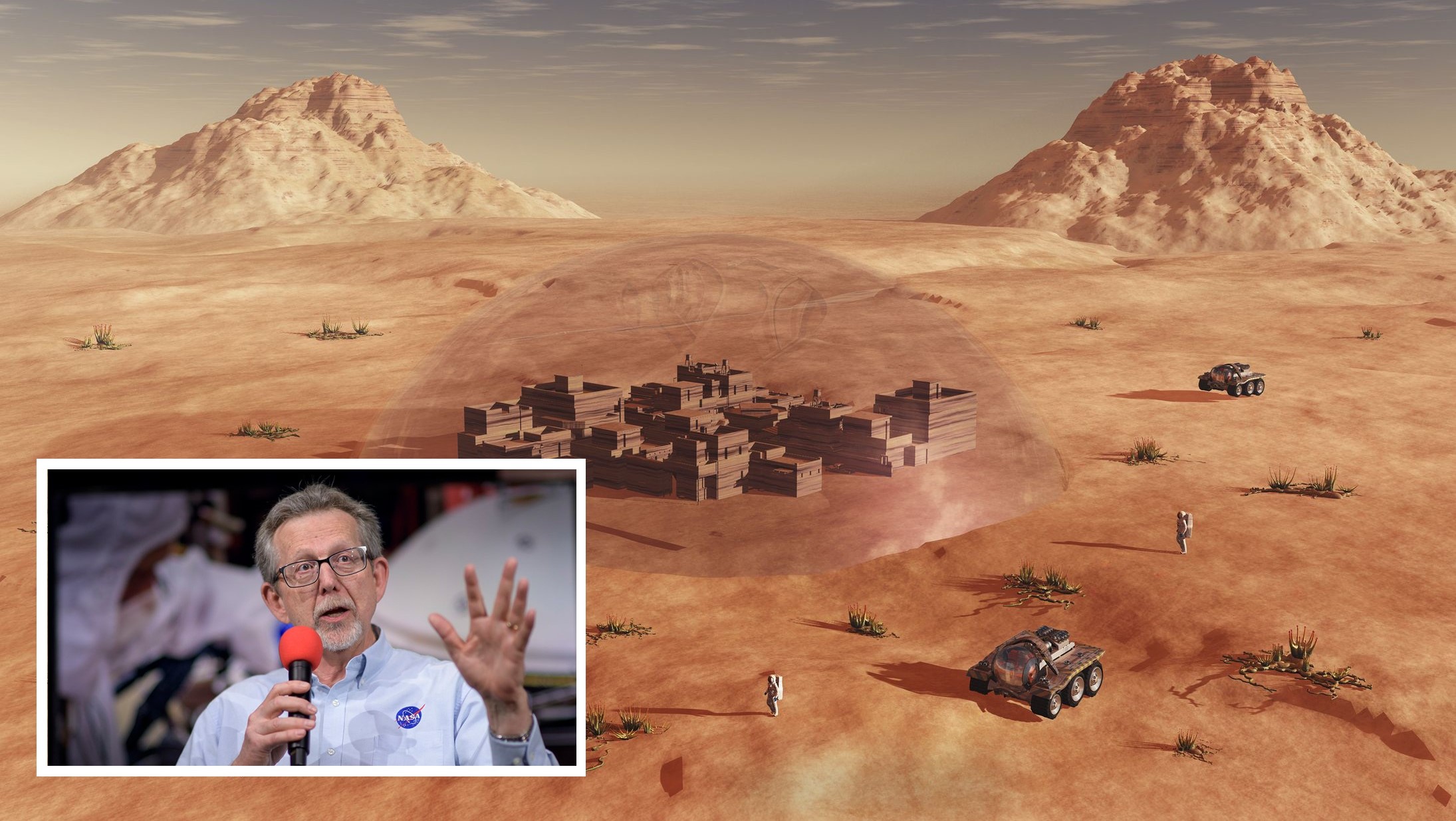In an interview, Jim Green, one of NASA’s top scientists who resigned as the year 2021 drew to a close, suggested that Mars may be terraformed to make it suitable for humans and carry out activities such as producing plants.
Terraforming, in its most basic form, is the act of altering essential elements like temperature, pressure, surface topography, and ecosystem on a large scale to significantly change the circumstances on a planet. It is what General Zod hoped to do on Earth by launching his World Engine and transforming the planet into Krypton in Man of Steel.
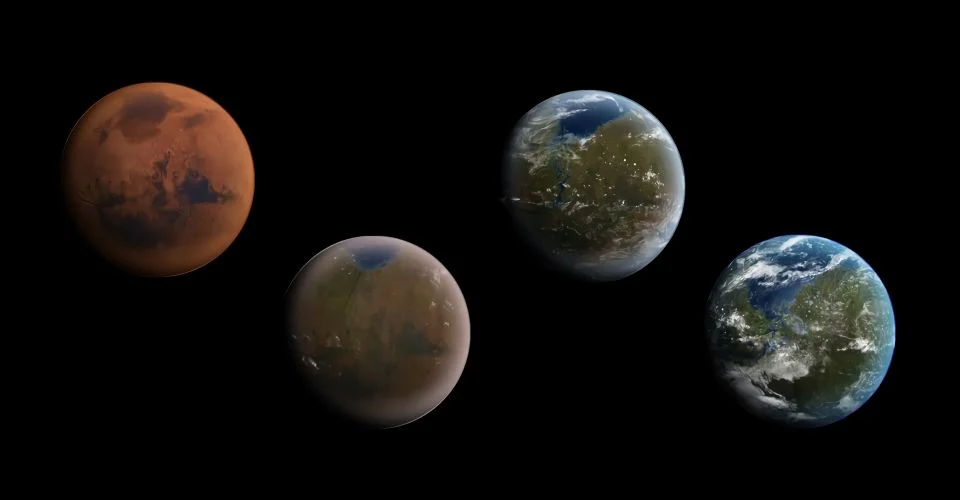
The notion is a frequent topic in science fiction and sounds extravagant. However, NASA claims that completing it at the present level of human technical advancement is impossible.
As per a report funded by the agency that came out in 2018, altering Mar’s climate to a degree that astronauts might walk on the Red Planet’s land without life support gear, would need technology that is far beyond human capacity in its present condition.
However, this does not imply that research into achieving that elusive objective has come to a halt, as scientists continue to look for new ways to transform even a tiny region of Mars into a livable environment.
Green is one of those optimistic people, having co-authored a study in 2017 called “A Future Mars Environment For Science And Exploration” that discussed changing the Martian temperature and pressure conditions in the near future, clearing the way for human habitation.
Green looks to be fairly sure in his vision, as he said openly in a recent interview. The former NASA scientist said that Mars can be terraformed in an interview with The New York Times. It can be accomplished, according to Green, by erecting a giant magnetic barrier between the Sun and Mars, essentially stopping the hot red star from destroying the planet’s atmosphere.
The concept is there, but the technology isn’t
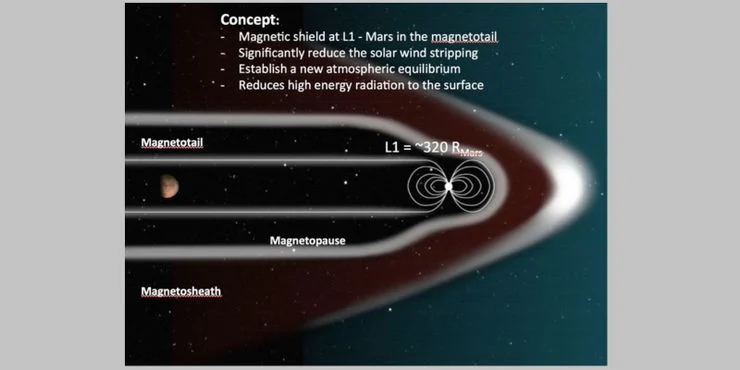
“You could have a lot more flexibility and agility if you did not require a spacesuit.” The greater warmth and pressure allow you to begin the process of developing plants in the soils,” Green was quoted as adding. Green was also a part of the NASA team that worked on the Ridley Scott film The Martian, in which Matt Damon’s character is stuck on Mars and lives by eating potatoes grown in his feces.
Green went on to say that he has been trying for two years to get a paper out expressing his perspective and that he expects it to cause some debate in the scientific community.
He presented simulations and models at the NASA Planetary Science Vision 2050 Workshop in 2017, detailing how the planet’s magnetic field can be changed to affect the planet’s temperature and make it more suitable for human exploration operations. The long shot, on the other hand, is to prepare the way for communities, which Elon Musk and others have been envisioning and talking about for some time.
The shield in issue is supposed to have a large dipole that creates a powerful artificial magnetic field that shields the planet from high-energy solar particles.
The main goal is to prevent solar winds from eroding Mars’ atmosphere on a huge scale, which would lead to a catastrophic climatic shift. Green declared at the time, “The solar system is ours; let us grab it.” In terms of the problem, the air pressure on Mars is just approximately 1% of that on Earth.
Even if all of the polar caps, minerals, and soil were collected to provide carbon dioxide and water for concentrating the atmosphere, estimations suggest that just 7% of the Earth’s atmosphere would be concentrated.
Could we really terraform Mars?
Almost every science fiction novel starts (and sometimes concludes) with the terraforming of Mars to make it more habitable.
However, altering Mars to be more Earth-like is more difficult than it seems, due to its freezing temperatures, distance from the sun, and inherent dustiness (and it already seems pretty tough).
A dead world
The issue is, Mars used to be a fun place to visit. I do not mean chilly; I mean warm. Mars had a thick, carbon-rich atmosphere, lakes and seas of liquid water, and maybe even white fluffy clouds billions of years ago. And this was when our sun was smaller, weaker, and more violent than it is now — in other words, our solar system is a far more suitable location for life now than it was 3 billion years ago, yet Mars is still red and lifeless.
Mars, however, was doomed from the start. Because it is smaller than Earth, it cooled quicker. Our planet’s core is still molten, and our planet’s powerful magnetic field is powered by a spinning glob of iron-rich goo at the middle. The magnetic field is a force field that may block and deflect the solar wind, which is a never-ending stream of high-energy particles ejected by the sun.
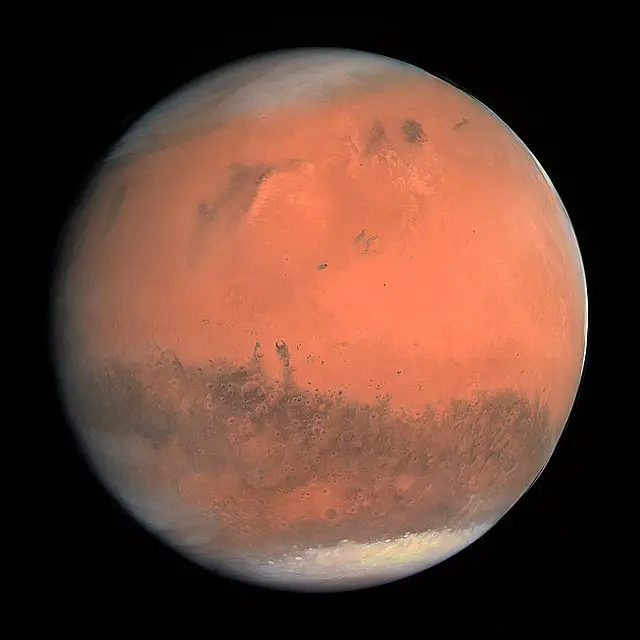
Mars’ core solidified and its magnetic force field went down as it cooled, exposing its atmosphere to the solar wind’s ravages. The Martian atmosphere was torn away by the solar wind over a period of around 100 million years. The waters on the surface melted away and the planet dried up when the air pressure plummeted to near-vacuum.
It is alluring: Mars was once Earth-like; is there any way to restore it to its former glory?
Polar opposites
We humans have lots of experience warming planets, thankfully (or regrettably, depending on your point of view). Inadvertently, mankind has boosted the Earth’s surface temperature by a simple greenhouse effect due to millennia of carbon emissions. We emit a lot of carbon dioxide, which serves as a large invisible blanket over Earth, allowing sunlight in but preventing heat radiation from leaving.
The increased heat encourages moisture to leave the oceans and play around as a vapor in the atmosphere, adding to the increase in temperature, which evaporates more water, which warms the planet even more, and before you know it, prime beachfront property is better suited as an underwater submarine base.
But if it works on Earth, it may work on Mars as well. We can not see the original Martian atmosphere since it is gone to space, but the planet does contain massive amounts of water ice, and frozen carbon dioxide in its polar caps, as well as some laced just under the surface.
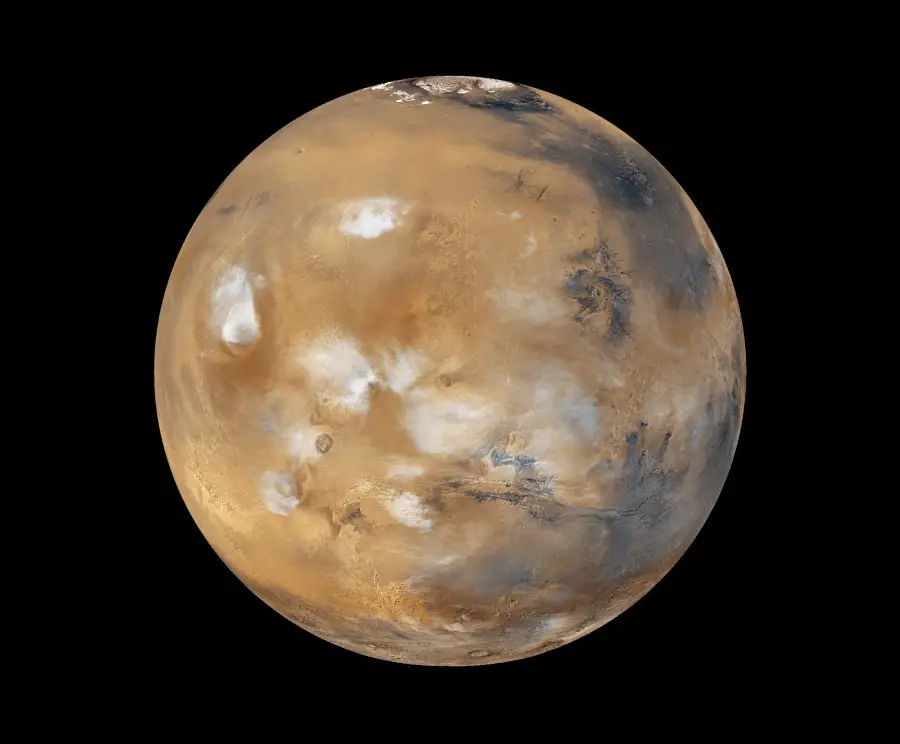
If we can thaw the ice caps, we may be able to release enough carbon into the atmosphere to start a greenhouse warming trend. All we would have to do is sit back, observe, and wait a few millennia for physics to work its magic and transform Mars into a much less hostile environment.
Unfortunately, that simple idea probably isn’t going to work.
Radical Ideas
The first problem is figuring out how to reheat the hats. Dusting the poles (to make them reflect less light and warm-up) to creating a gigantic space mirror to put some high-beam activity on the poles have all been proposed.
Any notion, however, would need massive technological advances and a manufacturing presence in space well beyond what we already have (in the case of the space mirror, we would need to mine around 200,000 tonnes of aluminum in space, when we presently have zero tonnes of metal in space).
Then there is the sad conclusion that Mars does not have nearly enough CO2 locked up to cause a significant warming trend. At sea level, Mars has less than 1% of the atmospheric pressure seen on Earth.
If every molecule of CO2 and H2O on Mars could be evaporated and injected into the atmosphere, the Red Planet would have… 2% of Earth’s atmospheric pressure. To keep the perspiration and oils on your skin from boiling, you would need twice as much atmosphere, and ten times as much to avoid using a pressure suit.
Let us not even bring up the issue of a shortage of oxygen
There are some bold solutions to address the scarcity of readily available greenhouse gases. Perhaps facilities dedicated to producing chlorofluorocarbons, a particularly harmful greenhouse gas, might be built. Or we might smuggle in some ammonia-rich comets from the furthest reaches of the solar system. Ammonia is a powerful greenhouse gas that ultimately breaks down into harmless nitrogen, which makes up the majority of our atmosphere.
Even if we could overcome the technical obstacles posed by those solutions, there is still one fundamental obstacle to overcome: the absence of a magnetic field. Every molecule we inject (or crash) into Mars’ atmosphere is susceptible to being blown away by the solar wind unless we safeguard it. It will not be simple, like constructing a pyramid out of desert sand.
There are several inventive methods available. Perhaps we might construct a massive electromagnet in orbit to deflect the solar wind. Perhaps a superconductor might be used to girdle Mars, creating an artificial magnetosphere.
We do not have the sophistication to implement any of those ideas, of course. Is it possible that we could terraform Mars and make it more hospitable? Sure, it is doable – no basic physical constraint stands in our way.
Do not hold your breath, however.

